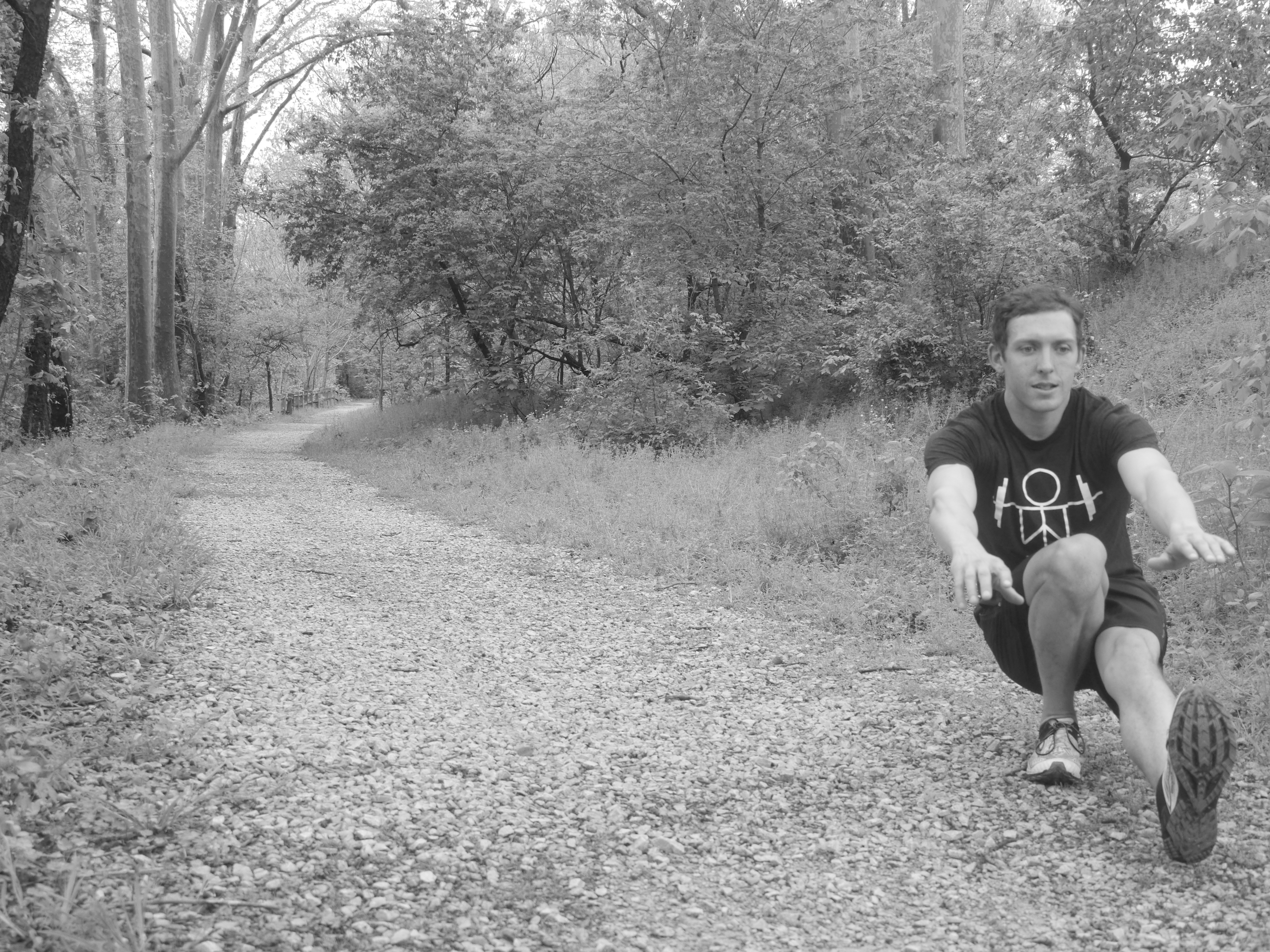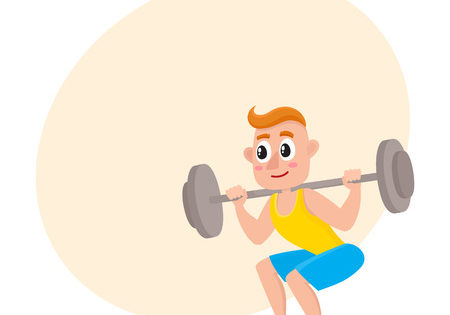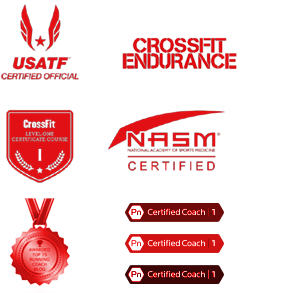Imagine you’re at the gym and of course there are no squat racks available. You’ve seen this before, so you know this is not a coincidence.
Squats look simple. Get that butt down and stand back up. Easy Peasy!
Then, why do squats come with a bad stigma?
“Squats are bad for your knees!”
‘You’re putting your back at risk.”
“Why would you lift a weight that heavy when you just run?”

Not to mention, when you personally try to squat all you hear is crackles in your kees and feel tightness through your calves?
So, what gives? Squatting seems like a fundamental human movement. Children can squat to the ground with ease.
But, most people have a tough with getting their butts to their knees. Even the people you see in the squat racks are not getting the real benefit of the exercises. It’s not from lack of trying, but rather lack of knowledge and body awakeners.
Let’s put a stop to bad squats!
In the article you will learn:
- How squatting will make you faster.
- How to perfect your squat form.
- How to identify and improve your mobility.
How squatting will make you a faster runner.
More muscle activation
Squatting is a compound movement. You will engage a significant amount of muscle during the exercise.
Most runners lack the access to large areas of muscle fiber. Running does not demand a massive demand of muscle.
A runner can lose the ability to contract the majority of their muscle fibers.
The squat will access more muscle fibers. Once you learn how to utilize the fibers, you can then use them to your advantage during endurance performance and running.
Improved recovery using your bodies natural recovery system.
Squatting will elicit a response in your body to release hormones that will build muscle and promote recovery.
Human Growth Hormone and testosterone are hormones that are released into the body when the large stimulus occurs. Running will not cause enough muscle damage to demand the response of these hormones.
Squatting something substantial to create the hormonal response to promote faster recovery from all activities, including running.
Increased body awareness
When you learn squat with proper form, you will create a connection between your mind and muscle.
A stronger mind/muscle connection will create greater body control and improve your running economy.
To squat well, you need to focus on physical exertion. The squat will simultaneously activate various muscle groups. Squatting will help you learn to control complex movements. Carry what the squat teaches you into your run to reduce injury, improve efficiency, and make you faster!
Ready to be strong? Click Here for a free strength program.
How to perform the best squat possible to make you a faster runner.
Now that you are ready to add squats to your routine to become a better runner you now need to know a secret.
A proper squat comes down to two things:
- Position
- Mobility
How to Position yourself for the best squat possible.
You can learn proper squat form.
So, why do so many people have lousy form?!?
The squat is something that must be learned and practiced. Incorrect form can lead to injury and minimal gains.
Follow the principles below to experience max gains and to stay healthy
5 Principles of a proper squat
#1) Ribs down
Engage in your abdominals and core muscles to pull your ribs down toward your pelvis.
Stay active to keep this position constant. Your core is now engagement, and your foundation is stable.
#2) Pelvic Tuck
Imagine tucking your hypothetical tail between your legs. Lightly squeeze your glutes and keep your butt tucked underneath for the duration of the squat.
Be mindful of squeezing your glutes during the entire movement.
#3) Hip Hinge
Begin this movement by imagining you getting chopped at your hips.
Your butt will go back, and your torso comes forward. Keep moving your posterior back while keeping your torso flat.
Feel your hamstrings engage until you can no longer go backward with your butt.
Then, bend your knees to begin to drop toward the ground
#4) Weight in Heels
As you descend, you need to focus on pressing your heels into the ground.
Continue to down as low possible while staying on your heels. Think of wiggling your toes throughout the squat.
#5) Knees Over Toes
Drive through your feet to move back to standing. On your ascent focus on spreading the floor with your feet.
Engaging with your feet and glutes will keep your knees from collapsing in and will add stability to the squat.
Click Here and learn more about runner strength training
Learn mobility to become flexible and strong.
Running is the same movement over and over for a long duration.
It’s no surprise that runners develop compensations and tightness. If you are a runner it’s safe to assume that you have felt tightness in at least one of the following areas:
- Hips
- Hamstrings
- Calves
- Back
Because of the repetitive nature. The tightness will make it difficult to achieve proper running and squatting positions. Here are four moves that will assess your movement.
Four ways to assess your tightness.
#1) Squat Hold
Get as low as you can during the squat and think about where you are feeling the tightness or what is stopping your range of motion.
#2) Overhead Squat
Extend your arms overhead to challenge your lumbar and thoracic mobility. If you struggle to get as low as your normal squat or you can’t keep your arms, up you may have tightness through you back
#3) Toe Touch
Bend your hips and reach for your toes. THink about what is limiting you from getting lower. Is it your back, hamstring, or calves?
#4) Ankle Check
From a kneeling position push your knees beyond your toes as far as possible. Keep your feet and heels planted on the group.
Assess if you are feeling tightness in the front or the back of the ankle.
Click Here For a full mobility screen video example
How to develop mobility
Now that you have assessed your tightness you can then solve the problem!
Do the exercises under the category where you feel the most tightness.
For tight Hips and Glutes
Couch Stretch / Hip opener
Pigeon Pose
Hip Capsule Mobilization
Your Back and Hamstring Fix
Couch Stretch
Jefferson Curl
Cat-Cow
Foot Roll
Thoracic Stretch
Cranky Calves and Ankle
Calf Strech
Calf Roll
Foot Roll
Ankle Warm-up
The best way to stop tightness is to be proactive. If you do not have exclusive tightness, then choose 1-2 movements in each category. Hold each move in the sequence for two minutes.
Doing mobility does not have to be a long drawn out process. A ten-minute mobility session a day can make a huge difference in your performance and recovery.
The only thing left to do is get out there and give it a shot.
In the meantime, get swoll!!

